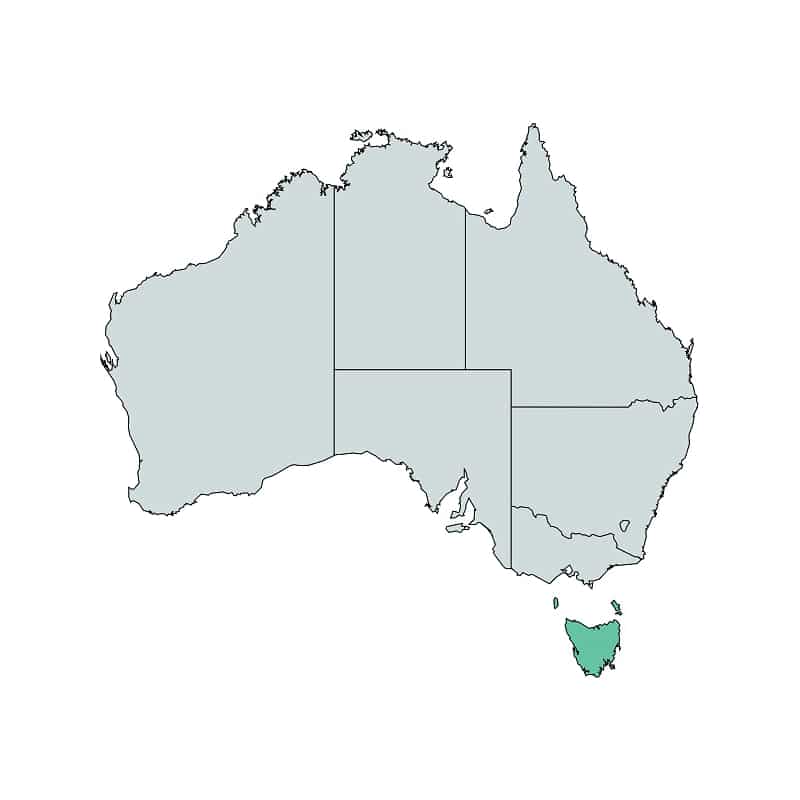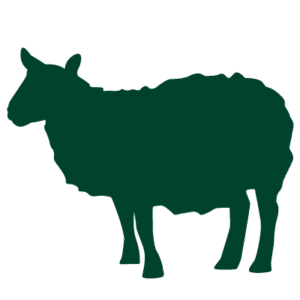Gil and Dawne Walker are the owners of Ashburn a property located approximately 22km south-west of Launceston. The property is currently managed as a sheep grazing property for fine wool with more than 133 hectares protected by a Tasmanian State Government covenant. It Gil and Dawn’s intent to continue to farm sustainably without impacting native habitat, and to ensure local flora and fauna are protected. The property is also a member of Land for Wildlife and the Private Forest Reserves Program.
Ashburn covers approximately 516 hectares of gently undulating tertiary sands over deep impermeable clays. Dry sclerophyll forest is the predominant vegetation type, with the property protecting one of Tasmania’s largest remaining communities of black peppermints (Eucalyptus amygdalina). Other vegetation includes swamp gums (E. ovata), manna gums (E. viminalis) and 15 species of native orchids.
Wildlife known to inhabit the property include Tasmanian devils (Sarcophilus harrisii), Tasmanian bettongs (Bettongia gaimardi), eastern (Dasyurus viverrinus) and spotted-tail (Dasyurus maculatus) quolls, bare-nosed wombats (Vombatus ursinus), long-nosed potoroos (Potorous tridactylus), Bennett’s wallabies (Macropus rufogriseus), platypus (Ornithorhynchus anatinus), Tasmanian pademelons (Thylogale billardierii), eastern barred (Perameles gunni) and southern brown (Isoodon obesulus) bandicoots, short-beaked echidnas (Tachyglossus aculeatus), ringtail (Pseudocheirus peregrinus) and brushtail (Trichosurus vulpecula) possums, sugar gliders (Petaurus breviceps) and several bat species.
Ashburn also provides vital habitat for more than 40 native bird species including yellow-tailed-black cocktaoos (Calyptorhynchus funereus), scarlet robins (Petroica multicolor), superb fairy-wrens (Malurus cyaneus), and sulphur-crested cockatoos (Cacatua galerita). With two known nesting sites, the sanctuary is also an important breeding site for endangered wedge-tailed eagles (Aquila audax fleayi)
This sanctuary is featured in Wildlife Lands 19!
The Walker Family property, Ashburn, spans 510 hectares and is 20km west of Launceston. We currently manage the property as a Polwarth sheep fine wool enterprise. Ashburn is made up of gently undulating tertiary sands over deep impermeable clays. Dry sclerophyll forest is the predominant vegetation type in one of Tasmania’s largest communities of black peppermint (Eucalyptus amygdalina). Other vegetation includes swamp gums, silver wattles, manna gums, blackwoods and blue pincushion flowers. Numerous fungi provide food for the potoroos.
We have permanently protected 133+ hectares under a Tasmanian Government Covenant, complemented by our membership with theWildlife Land Trust, the Private Forest Reserve Program and Land for Wildlife. Our covenant comprises three major areas with interconnecting shelter belts providing corridors between them.
Wildlife is abundant at Ashburn which is home to iconic Tasmanian species like devils, bettongs and pademelons. Others include wombats, eastern and spotted-tailed quolls, Bennett’s wallabies, long-nosed potoroos, eastern-barred and southern brown bandicoots, echidnas, sugar gliders, ringtail and brush-tailed possums and several bat species identified by the University of Tasmania. Lowland copperhead snakes are the prevalent reptile, along with frogs, skinks and lizards. Ashburn provides vital habitat for 40+ native birds, with two known nesting sites for the endangered Tasmanian wedge-tailed eagle. We plan to control deer and feral cats. Gorse, while a problem, offers habitat for small birds and native mice. Fallen trees are left in-situ as a source of habitat and food.
Ashburn is happily shared with researchers and PhD students (studying bats, birds and bettongs),Tasmanian Covenant holders and walking/field naturalist groups. We’ve even hosted an International Girl Guide night-spotting camp out. We will continue farming sustainably, limiting chemicals as we work towards an organic future, without impacting native habitat and ensuring protection of native flora and fauna.




